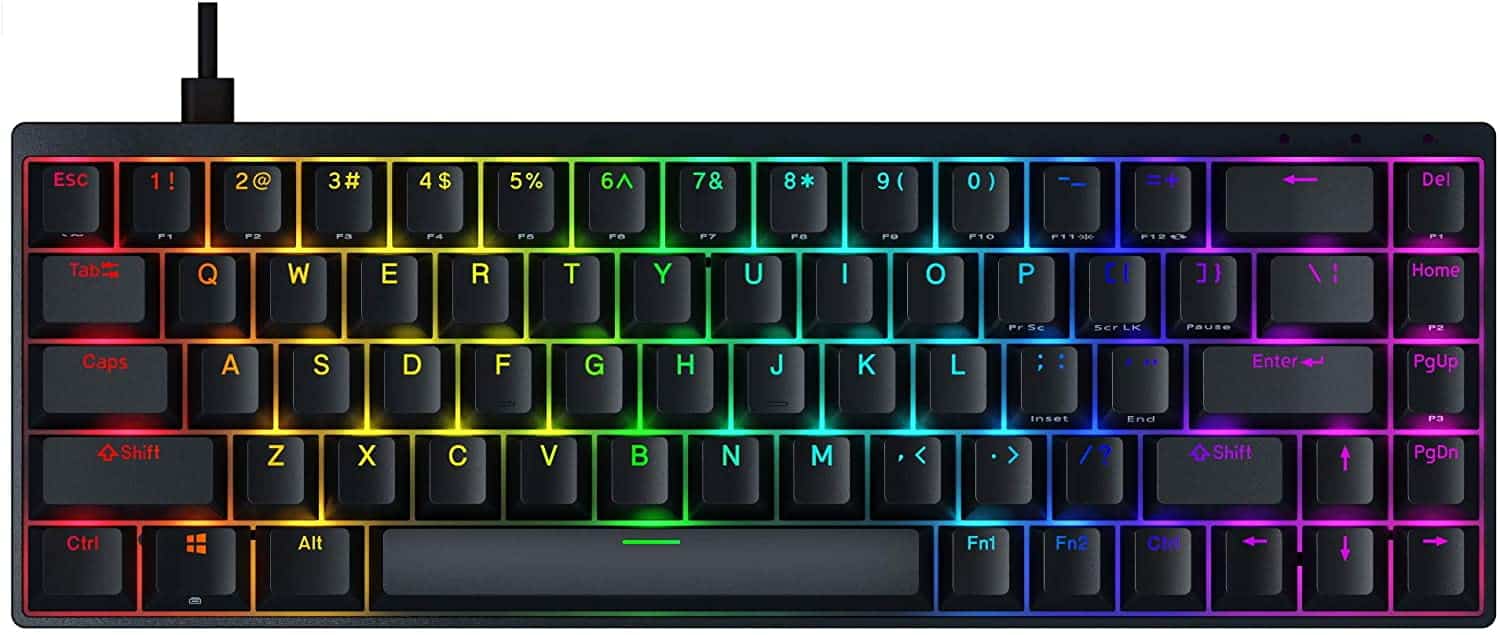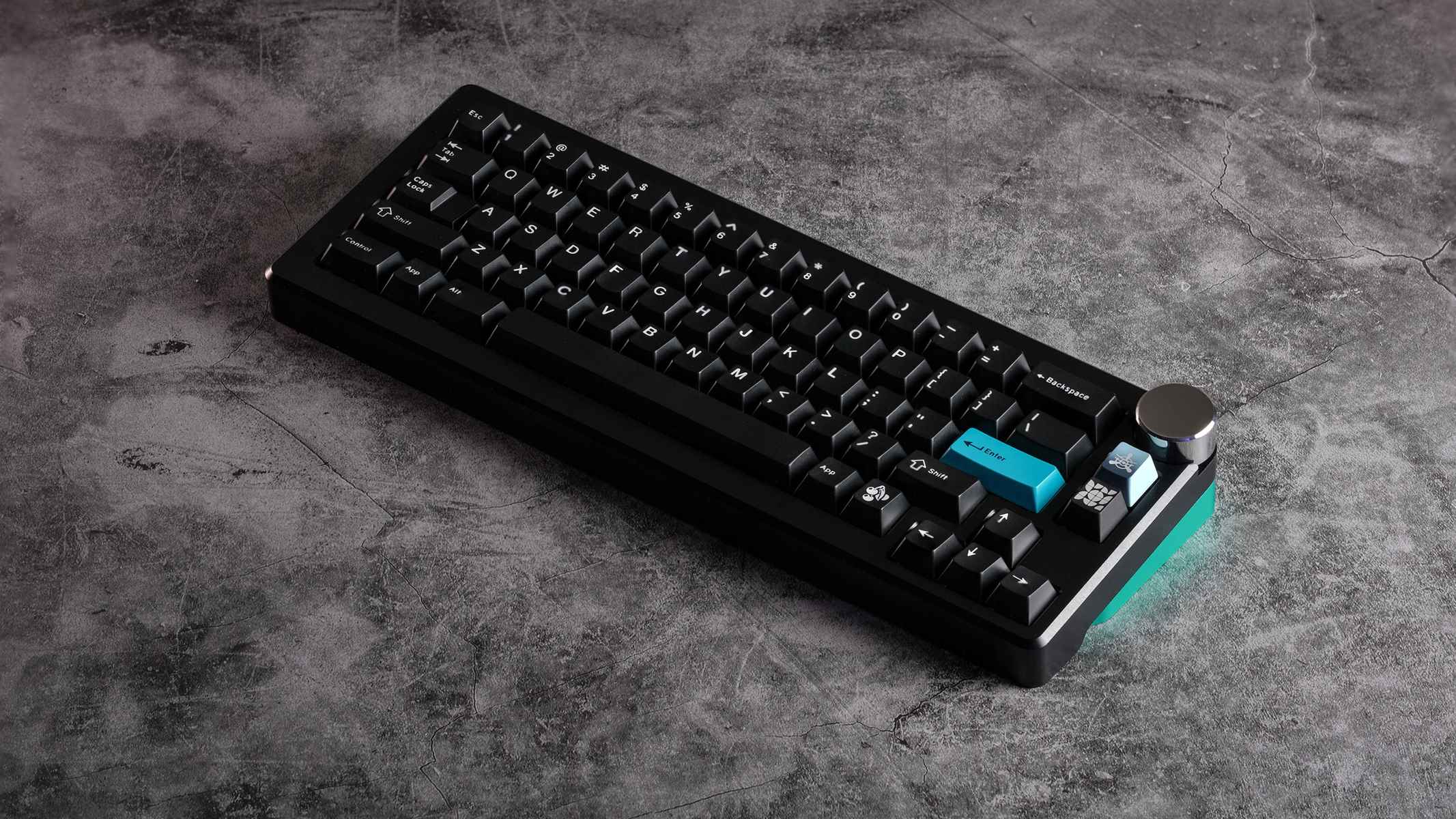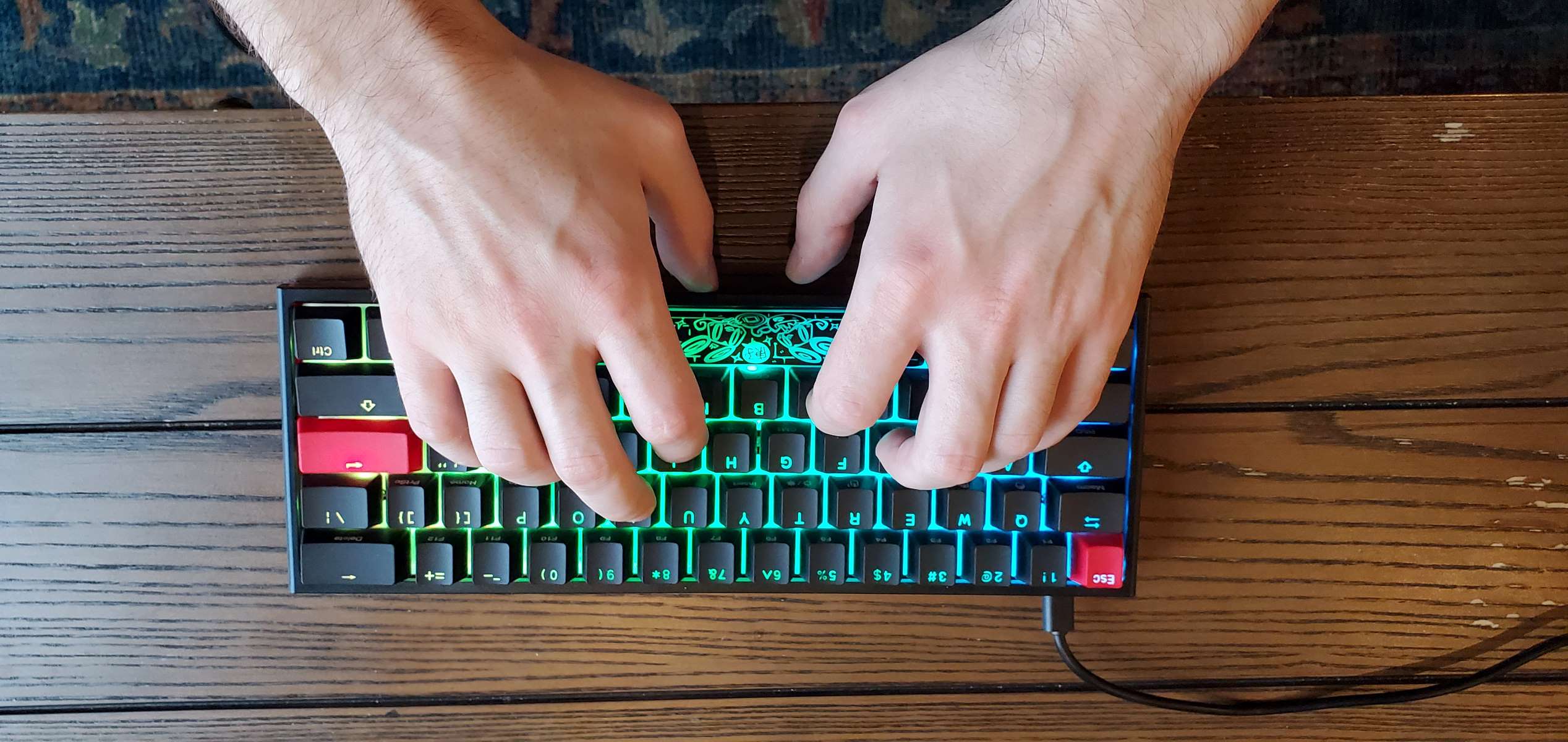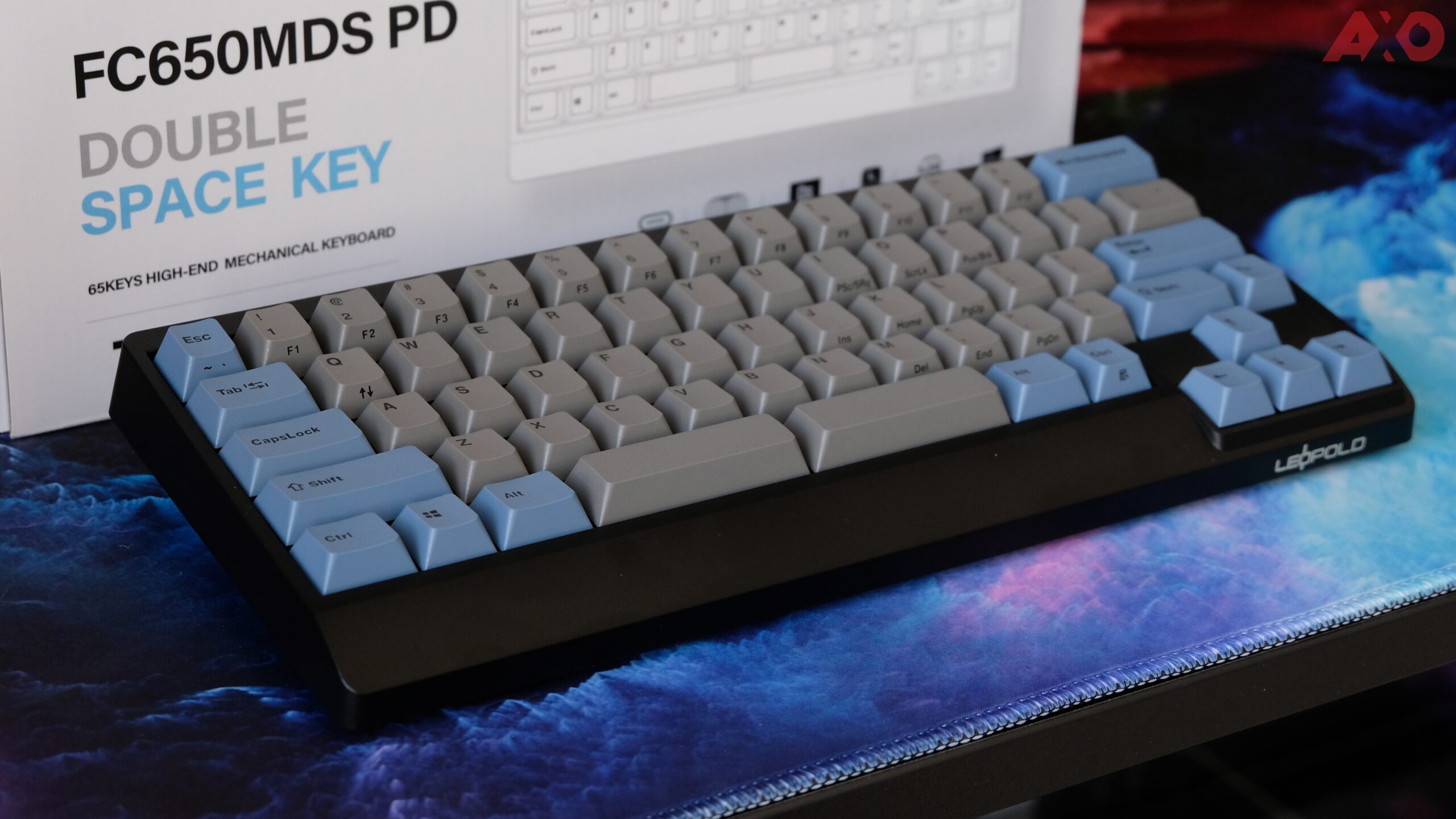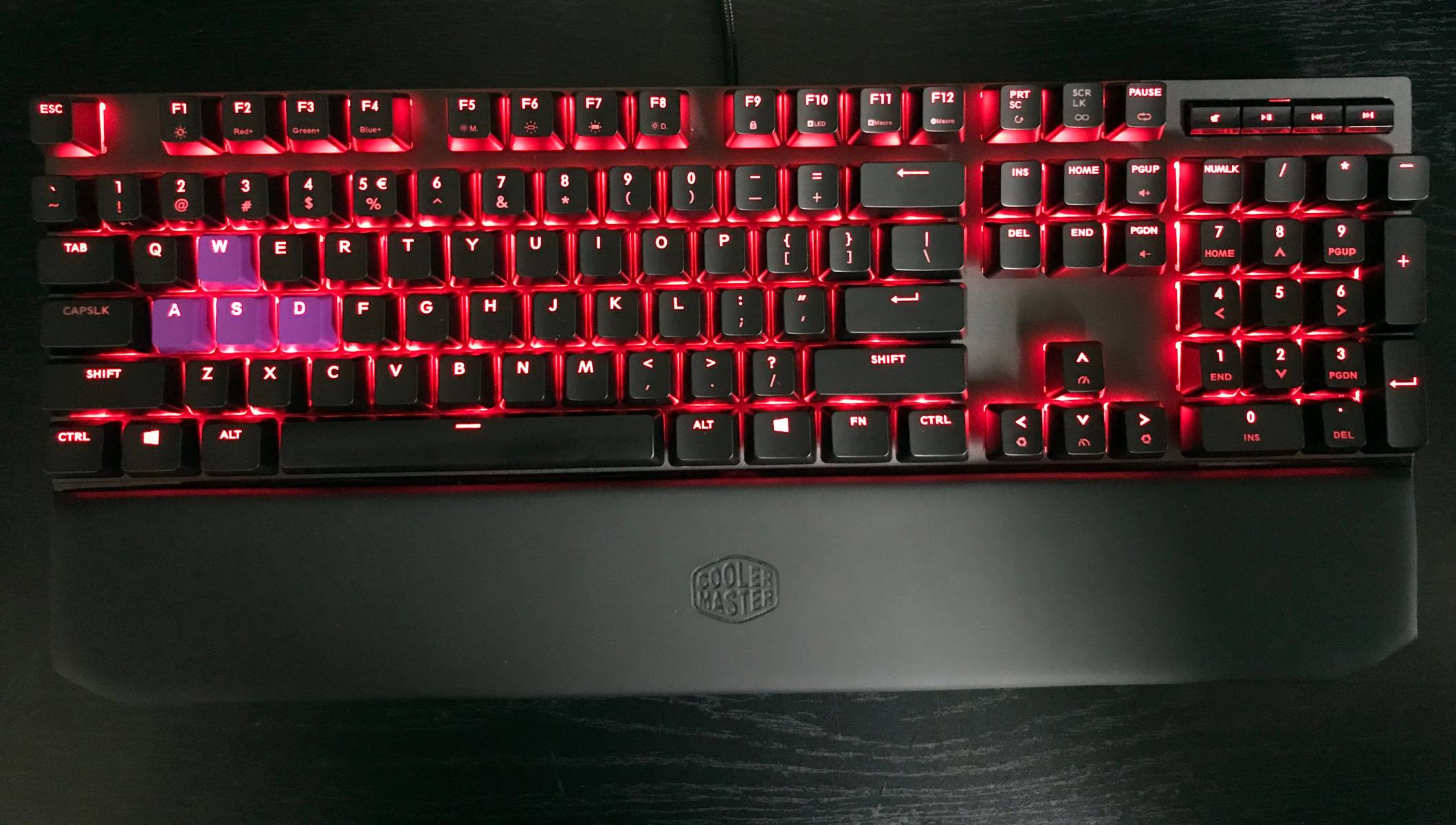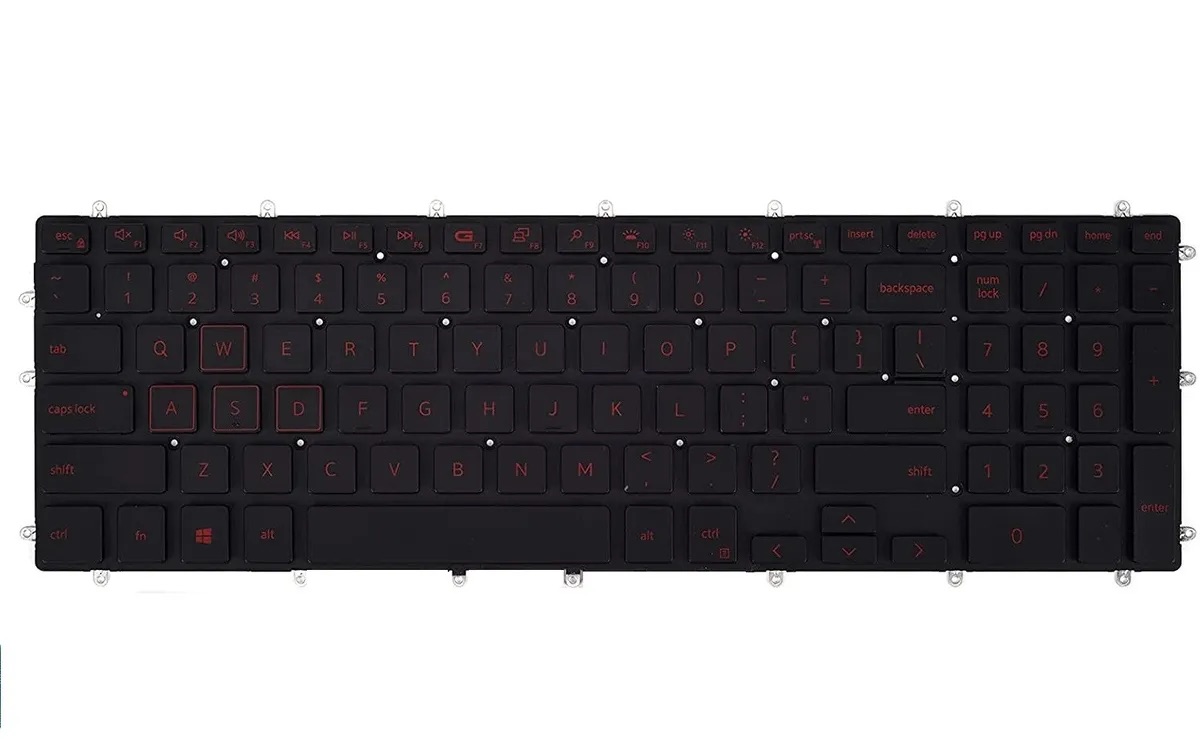Introduction
A 65% keyboard is a compact and versatile input device that has gained popularity among computer enthusiasts, gamers, and professionals alike. Its compact form factor, with its reduced size and minimalistic design, offers a balance between functionality and portability. In this article, we will explore the key features and benefits of a 65% keyboard, as well as answer the question: “How many keys are there in a 65% keyboard?”.
With the increased demand for space-efficient and ergonomic peripherals, the 65% keyboard has emerged as a viable alternative to full-sized and even tenkeyless (TKL) keyboards. Its smaller footprint is ideal for those who want to maximize desk space or need a keyboard that can be easily transported.
Moreover, the 65% keyboard offers a streamlined layout that eliminates the number pad and function keys found in larger keyboards. This reduction in size does not mean a compromise in usability or functionality. In fact, 65% keyboards often use layering or function key combinations to provide access to all essential keys and features, making them efficient and versatile input devices.
Purpose of a 65% Keyboard
The purpose of a 65% keyboard is to provide a compact and efficient input device that maximizes available desk space while maintaining essential functionality. With the elimination of the number pad and function keys, a 65% keyboard offers a streamlined layout that is perfect for users who prioritize space-saving solutions.
One of the main advantages of a 65% keyboard is its portability. The smaller form factor allows for easy transportation, making it an excellent choice for professionals who frequently work on the go or gamers who attend LAN parties. Additionally, the reduced size can also be beneficial for individuals who have limited desk space or prefer a clutter-free workstation.
Despite its compact size, a 65% keyboard still maintains essential keys, including alphanumeric keys, arrow keys, and modifier keys (such as Shift, Control, and Alt), ensuring that users can perform their daily tasks efficiently. Most 65% keyboards also support programmability, allowing users to customize the function of certain keys or create macros for quicker command execution.
Another purpose of a 65% keyboard is its aesthetic appeal. With a minimalistic design and a focus on eliminating unnecessary keys, these keyboards offer a clean and sleek look that can complement any desk setup or workspace. Many 65% keyboards also feature customizable RGB lighting, enabling users to personalize their keyboard’s appearance and create stunning visual effects.
In summary, the purpose of a 65% keyboard is to provide a compact and portable input device that maximizes available desk space, offers essential functionality, and enhances the overall aesthetics of a workstation. With its versatile design and customizable features, a 65% keyboard is an excellent choice for those seeking a balance between functionality and minimalist design.
Key Layout of a 65% Keyboard
The key layout of a 65% keyboard is specifically designed to offer a compact form factor while retaining essential keys for efficient typing and navigation. Although the layout may vary slightly between different manufacturers, the general configuration of a 65% keyboard remains consistent.
At the core of the 65% keyboard layout are the alphanumeric keys, including letters, numbers, and symbols. These keys occupy the main portion of the keyboard and allow users to input text and characters. Despite the reduction in size, the alphanumeric keys on a 65% keyboard maintain a standard size for comfortable typing.
In addition to the alphanumeric keys, a 65% keyboard typically includes an arrow cluster positioned in a compact layout. These arrow keys enable users to navigate documents, web pages, and games with ease. While the arrow cluster is condensed to fit the smaller form factor, it still retains the essential directional functionality.
Modifier keys, such as Shift, Control, Alt, and Windows (or Command on Mac), are strategically placed to provide quick access and facilitate various keyboard shortcuts. These keys are crucial for executing tasks like copy and paste, switching between applications, and adjusting volume and brightness settings.
The function row, commonly found on full-sized keyboards, is absent in a 65% keyboard. However, the functions of these keys are typically mapped to other layers or accessible through specific key combinations. This layering functionality allows users to utilize the missing function keys without sacrificing space on the keyboard.
Lastly, a 65% keyboard may include additional keys, such as media control buttons, a calculator shortcut, or programmable macro keys. These keys enhance the overall functionality of the keyboard and provide convenient shortcuts for common tasks.
In summary, the key layout of a 65% keyboard is carefully designed to offer a compact and efficient typing experience. It features essential alphanumeric keys, an arrow cluster, modifier keys, and layering functionality. Despite its reduced size, a 65% keyboard provides all the necessary keys for productive work and enjoyable gaming sessions.
Number of Keys in a 65% Keyboard
The number of keys in a 65% keyboard is one of the most common questions asked by keyboard enthusiasts. Despite its compact size, a 65% keyboard manages to retain a substantial number of keys, striking a balance between functionality and space-saving design.
In general, a traditional full-sized keyboard consists of 104 or 105 keys, including alphanumeric keys, function keys, and a number pad. In comparison, a 65% keyboard typically has around 68 to 71 keys, depending on the specific layout and manufacturer.
The primary reason for the reduced number of keys in a 65% keyboard is the elimination of the number pad and function row. This allows for a more compact form factor, making the keyboard ideal for users who prioritize space efficiency.
Despite the omission of the number pad, 65% keyboards retain dedicated arrow keys, along with essential modifier keys like Shift, Control, Alt, and Windows/Command. These keys ensure efficient navigation and support for various keyboard shortcuts.
To make up for the missing function row, many 65% keyboards utilize layer functionality. By holding down a specific key or using a combination of keys, users can access additional functions typically associated with the function row. This layering capability allows for quick access to media controls, volume adjustment, and other commonly used functions.
It’s important to note that the number of keys in a 65% keyboard can vary slightly depending on the specific layout or customization options offered by the manufacturer. Some 65% keyboards may have additional keys, such as programmable macro keys or media control buttons, to enhance functionality.
In summary, a 65% keyboard typically has around 68 to 71 keys, omitting the number pad and function row found in full-sized keyboards. Despite the reduction in keys, the keyboard retains essential alphanumeric keys, arrow keys, and modifier keys. The use of layer functionality allows for access to additional functions, providing a balance between functionality and space-saving design.
Key Size and Placement on a 65% Keyboard
The key size and placement on a 65% keyboard are carefully designed to ensure comfortable and efficient typing, despite the compact form factor. While the specific key sizes and placements may vary slightly between different manufacturers and layouts, there are some common characteristics found in most 65% keyboards.
Alphanumeric keys, including letters, numbers, and symbols, typically have a standard size on a 65% keyboard. This allows for familiar and comfortable typing experience, ensuring that users can quickly adapt to the compact layout without sacrificing accuracy or speed.
The arrow keys, although condensed to fit the smaller form factor, retain their functionality and are usually arranged in an inverted “T” layout. This configuration makes it easy for users to navigate documents, web pages, and games with precision and familiarity.
Modifier keys, such as Shift, Control, Alt, and Windows/Command, are strategically placed to provide quick access and efficient use. These keys are positioned in easily reachable locations, allowing users to execute common keyboard shortcuts without discomfort or strain.
To compensate for the missing function row, 65% keyboards often utilize function key combinations or layering functionality. This means that certain keys perform dual functions depending on the context or layer selected. The placement of these secondary functions is usually intuitive and accessible, making it easy for users to adapt to the keyboard’s unique layout.
Keycap compatibility is an essential consideration for 65% keyboards. While the majority of keys follow the standard layout and size, some non-standard key sizes and placements can make finding compatible keycap sets a bit challenging. However, many popular keycap manufacturers offer specific sets designed to fit 65% keyboards, ensuring that users can customize their keyboards to their liking.
In summary, the key size and placement on a 65% keyboard are designed to strike a balance between comfort, functionality, and space-saving design. Alphanumeric keys maintain a standard size, arrow keys retain precision navigation, and modifier keys are strategically positioned for efficient use. The use of function key combinations and layering allows for access to additional functions, while keycap compatibility ensures customization options for users.
Keycap Compatibility with a 65% Keyboard
Keycap compatibility is an important consideration for users of a 65% keyboard who wish to personalize the appearance and feel of their keyboard. While many keys on a 65% keyboard follow the standard keycap sizes and placements, there are a few non-standard keys that can make finding compatible keycap sets a bit challenging.
The majority of keys on a 65% keyboard, such as alphanumeric keys and modifier keys (Shift, Control, Alt, and Windows/Command), usually have standard sizes that are compatible with most keycap sets available in the market. This means that users have a wide range of options when it comes to choosing replacement keycaps.
The arrow keys on a 65% keyboard are typically smaller and condensed to fit the compact layout. However, many keycap manufacturers offer compatible arrow keycaps that can be purchased separately or as part of a complete keycap set. These arrow keycaps are designed to match the aesthetics and size of the arrow keys on a 65% keyboard, ensuring a seamless fit.
The non-standard keys on a 65% keyboard are usually those that are specific to the layout and layering functionality. These keys can include the Delete key, Page Up/Down, function keys, and other specialized keys. Since these keys may differ in size and shape from traditional keycap sets, finding compatible keycaps can be more challenging. However, many niche keycap manufacturers offer custom keycap sets designed specifically for 65% keyboards, including the non-standard keys.
It’s worth mentioning that some 65% keyboards come with hot-swappable switches, allowing users to easily remove and replace the switches without soldering. This feature not only provides more flexibility in terms of customization but also makes it easier to replace keycaps as needed.
In summary, while the majority of keys on a 65% keyboard follow standard keycap sizes and placements, there are a few non-standard keys that require specific keycap compatibility. Users can find a variety of keycap sets in the market that cater to 65% keyboards, including arrow keycaps and custom sets that include non-standard keys. Additionally, the availability of hot-swappable switches on some 65% keyboards further enhances the ease of replacing keycaps to achieve a personalized look and feel.
Frequently Asked Questions about 65% Keyboards
Here are some common questions and answers regarding 65% keyboards:
-
What are the advantages of using a 65% keyboard?
65% keyboards offer a compact form factor that saves space on your desk without sacrificing essential functionality. They are also portable, customizable, and visually appealing. -
Are 65% keyboards suitable for gaming?
Yes, 65% keyboards are suitable for gaming. While they may lack dedicated function keys, these functions can be accessed through layering or function key combinations. Many gamers prefer the compact size and minimalistic design of 65% keyboards for a clutter-free gaming setup. -
Do 65% keyboards have programmable keys?
Many 65% keyboards feature programmable keys, allowing users to customize key functions and create macros. This feature enhances productivity and gaming experience. -
Can I use custom keycaps with a 65% keyboard?
Yes, you can use custom keycaps with a 65% keyboard. The majority of keys on a 65% keyboard follow standard sizes and placements, making it compatible with various keycap sets available in the market. -
Are 65% keyboards suitable for programming and typing-intensive tasks?
Yes, 65% keyboards are suitable for programming and typing-intensive tasks. The compact layout retains essential alphanumeric keys and provides efficient access to modifier keys. Additionally, the layering functionality allows for quick access to commonly used functions. -
Can I use a 65% keyboard with a Mac?
Yes, many 65% keyboards are compatible with Mac systems. However, it’s important to ensure that the keyboard supports the necessary Mac key functions, such as Command and Option keys.
These are just a few of the frequently asked questions about 65% keyboards. As the popularity of these compact keyboards continues to grow, more questions and answers are being explored by keyboard enthusiasts and users seeking to enhance their typing and gaming experience.
Conclusion
In conclusion, 65% keyboards offer a compact and versatile solution for users who prioritize space efficiency without sacrificing functionality. With their streamlined layout and elimination of the number pad and function keys, these keyboards maximize available desk space and provide a clutter-free working environment.
Despite their smaller form factor, 65% keyboards retain essential alphanumeric keys, arrow keys, and modifier keys. Through layering and function key combinations, users can access additional functions typically found in the missing function row. This layering functionality makes 65% keyboards flexible and adaptable to various tasks and workflows.
The key size and placement on a 65% keyboard are designed for comfortable and efficient typing. While some keys may differ in size or layout compared to traditional keyboards, compatibility with standard keycap sets allows users to personalize their keyboard’s appearance and feel.
The advantages of using a 65% keyboard extend beyond just saving desk space. These keyboards are highly portable and suitable for professionals on the go and gamers attending LAN parties. Additionally, customizable features like programmable keys and layering functionality enhance productivity and gaming experience.
It’s important to note that 65% keyboards may not be suitable for every user or use case. Those who heavily rely on the number pad or require dedicated function keys may find alternative keyboard options more suitable for their needs. However, for users seeking a balance between functionality and a minimalist design, a 65% keyboard is a fantastic choice.
As the demand for ergonomic and space-saving peripherals continues to grow, the popularity of 65% keyboards is expected to rise. With their compact form factor, customizable features, and aesthetic appeal, these keyboards offer a compelling solution for those seeking an efficient and stylish input device.







